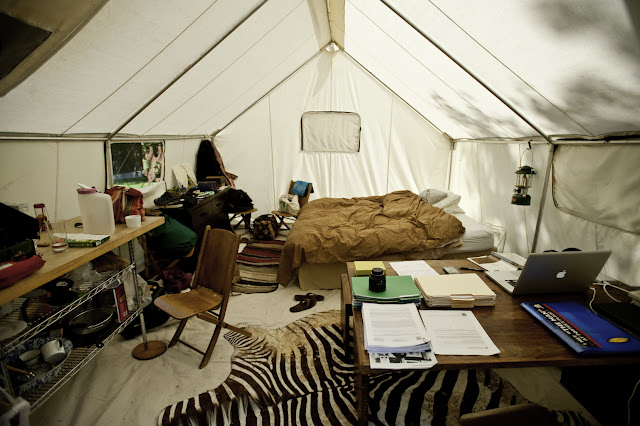Not exactly a grove. The opposite, in fact. Yet an example of a human-scale space created for one evening's picnic in the midst of a 250,000 sq mile desert: The Empty Quarter (Rub' al Khali) on the border of the UAE + Saudi Arabia.
[design tips]
1. Shoes off.
2. Location: nestled between 2 dunes; never place a house or a picnic on top of a ridge.
3. Space demarcation: 4 tiki torches at the 4 corners of our space.
4. Material change: large blanket, but never make a living space too large. Picnics included.
5. Light. That night was a full moon, and we had tiki torches, but candles with wind covers are a must for any outdoor space.
6. Food. Opt for the highest quality your budget allows. We had just smuggled in Champagne, a nice Bordeaux, some foie gras from France with fresh bread and veggies.
7. Company. Be selective. I politely allowed a 4th to join us whom I didn't like; it put a twist on the evening. Stand firm on the company you keep in your sacred outdoor spaces.
A different desert, different picnic, different time of year. Desert sands after spring rains.
 |
| Astronaut aerial photo of the Empty Quarter |
 |
| The author in a hotel near the sands. |
[design tips]
1. Shoes off.
2. Location: nestled between 2 dunes; never place a house or a picnic on top of a ridge.
3. Space demarcation: 4 tiki torches at the 4 corners of our space.
4. Material change: large blanket, but never make a living space too large. Picnics included.
5. Light. That night was a full moon, and we had tiki torches, but candles with wind covers are a must for any outdoor space.
6. Food. Opt for the highest quality your budget allows. We had just smuggled in Champagne, a nice Bordeaux, some foie gras from France with fresh bread and veggies.
7. Company. Be selective. I politely allowed a 4th to join us whom I didn't like; it put a twist on the evening. Stand firm on the company you keep in your sacred outdoor spaces.
A different desert, different picnic, different time of year. Desert sands after spring rains.
 |
| Rub' Al Khali aerial photo of the dunes |





































